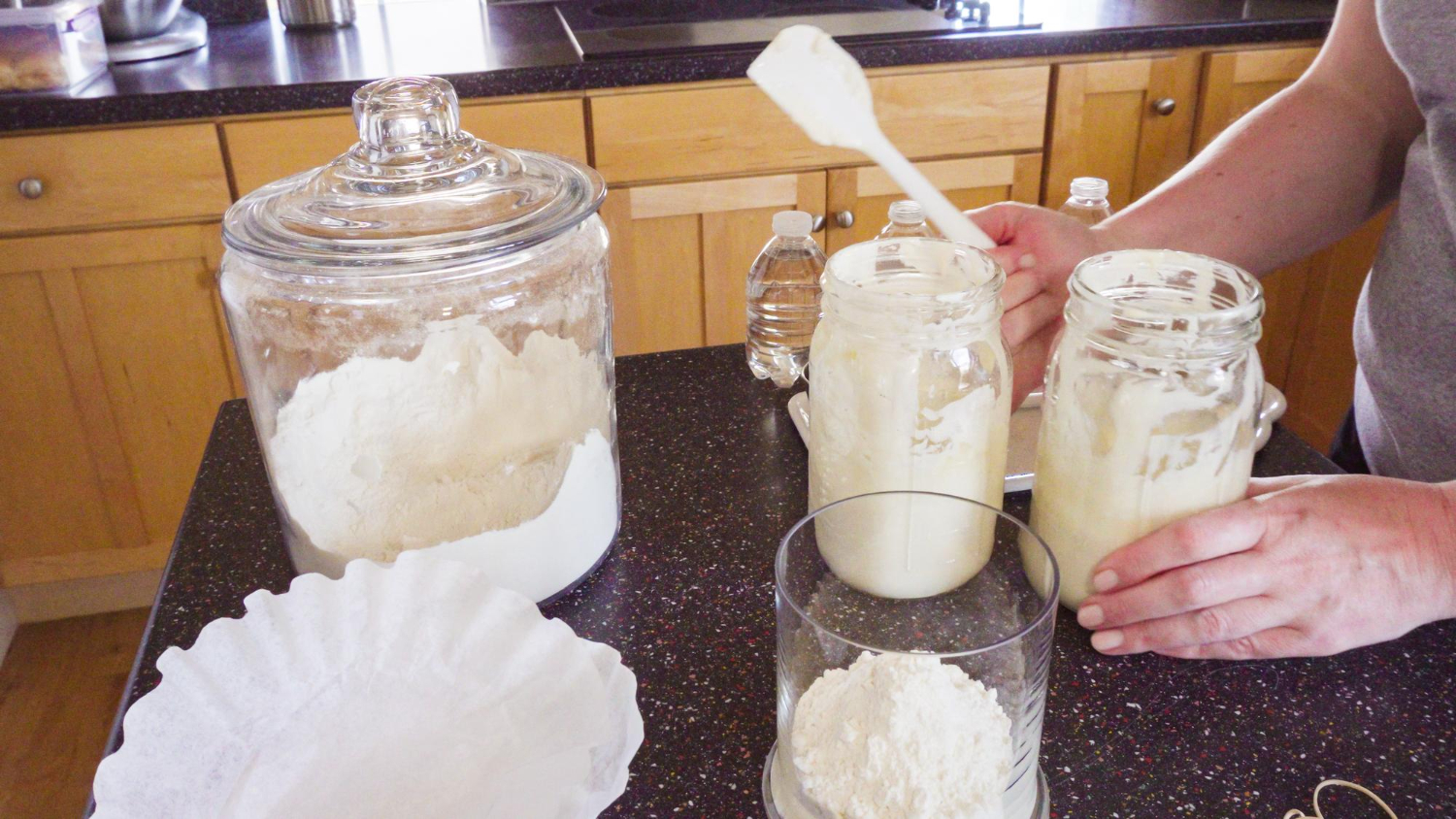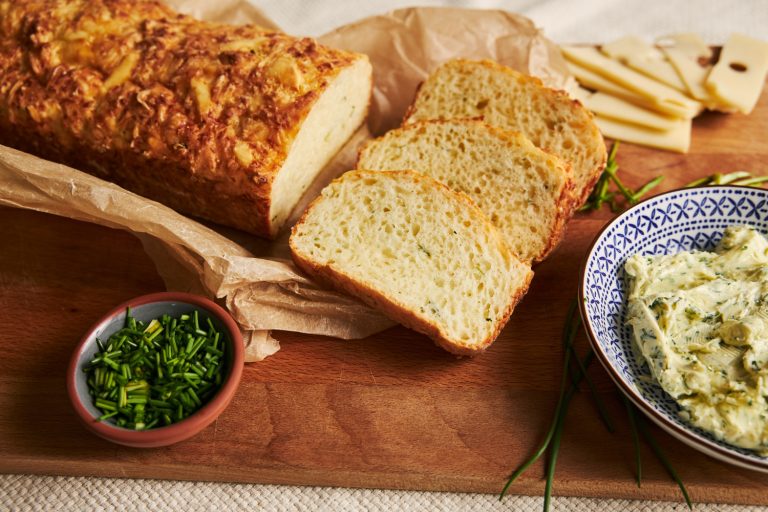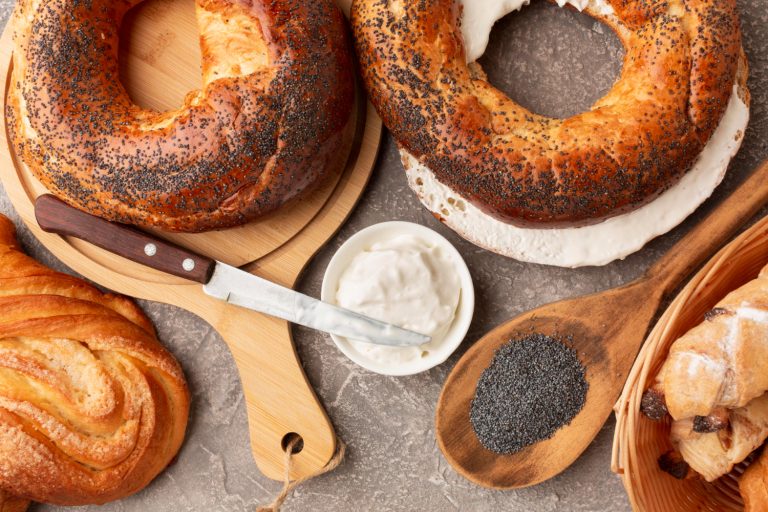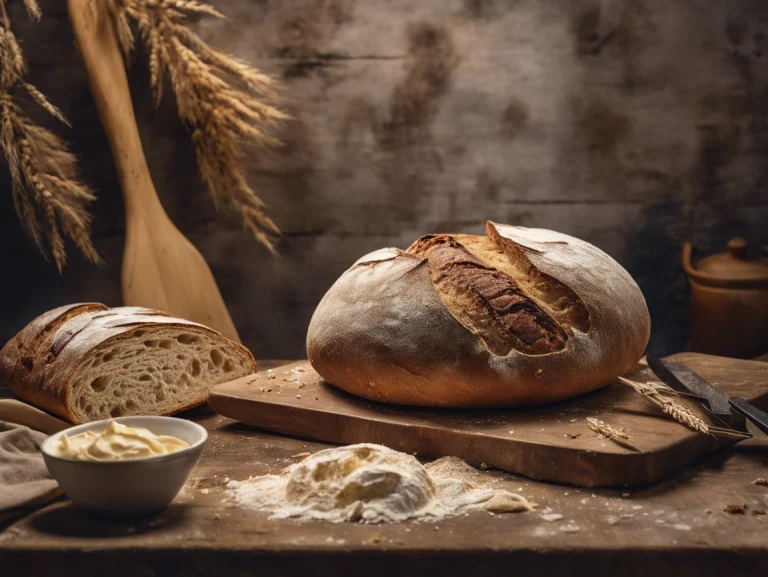Sourdough Starter Feeding Ratios: 1:1:1 vs 1:2:2 vs 1:5:5 Explained
Sourdough starter feeding ratios are a vital part of successful sourdough baking. These ratios shape your starter’s growth rate, strength, and the bread’s final flavor profile. Many bakers find it hard to keep their starters healthy because they haven’t found the right balance between starter, flour, and water measurements.
In this piece, you’ll get into the differences between popular feeding ratios like 1:1:1, 1:2:2, and 1:5:5. You’ll discover how each ratio impacts your starter’s activity, fermentation speed, and flavor development. The detailed tips about maintenance, feeding schedules, and storage methods will help you get consistent, reliable results with your sourdough starters.
The Science Behind Sourdough Starter Feeding Ratios
The science behind sourdough starters reveals the sort of thing I love about microbial activity and chemical reactions. The sourdough starter creates a unique ecosystem where beneficial microorganisms have managed to keep working together. These microorganisms create the perfect environment to make bread.
Microbial activity in sourdough starters
A sourdough starter thrives with two essential microorganisms: yeasts and lactic acid bacteria (LAB). These microbes exist naturally in flour and air, and they can be found on a baker’s hands. LAB dominates the typical starter by maintaining a 100:1 ratio over yeasts. This creates a complex symbiotic relationship that gives sourdough bread its unique flavors and rising capabilities.
How feeding ratios affect yeast and bacteria growth
Feeding ratios determine the speed at which microorganisms consume nutrients and multiply. Bakers who use smaller ratios (like 1:1:1) create an environment with limited food supply that accelerates fermentation and produces earlier peak times. Larger ratios (such as 1:5:5) provide additional nutrients to the mixture and create a slower fermentation process with extended peak times. This natural relationship helps bakers control their starter’s activity according to their schedule and bread-making requirements.
The role of hydration in feeding ratios
Hydration levels are significant to starter maintenance and behavior. A typical liquid starter maintains 100% hydration, which means equal parts water and flour by weight. The consistency resembles a batter that bakers find easy to maintain and mix. Different hydration levels affect:
- Fermentation speed and microbial activity
- Starter consistency and texture
- Flavor development and acidity levels
- Ease of maintenance and mixing
Temperature works together with hydration and feeding ratios. Warmer conditions speed up fermentation while cooler temperatures slow the process down. Bakers can adjust their ratios based on environmental conditions to achieve desired outcomes.
Exploring the 1:1:1 Feeding Ratio
The 1:1:1 feeding ratio represents the simple approach to a sourdough starter’s maintenance and uses equal weights of starter, flour, and water. This simple ratio serves as a measure to understand starter behavior and maintenance.
Benefits and drawbacks
A 1:1:1 feeding ratio gives your sourdough maintenance several advantages:
- Your dough ferments quickly (3-4 hours at 78ºF)
- You get predictable peak times
- The volume becomes easier to manage
- The schedule works great for daily baking
The ratio needs more frequent feeding and closer monitoring than higher ratios. Your starter’s peak activity window requires extra attention because the fermentation cycle moves faster.
Ideal use cases
The 1:1:1 ratio works best when bakers follow a regular baking schedule. This approach especially works for:
Daily bread production: The starter becomes ready at predictable intervals at the time bakers need it. A morning feeding will give a perfectly active starter by mid-morning to mix the dough.
Warm climate baking: Bakers can maintain multiple feeding cycles throughout the day in environments around 78ºF. This temperature helps maintain the starter’s optimal activity.
Maintenance tips
Temperature control is a vital part of managing a 1:1:1 ratio starter. You can slow down fermentation by lowering the temperature or adjust feeding times to match your schedule. The starter works best at room temperature (around 70-75°F), which creates a good balance between activity and maintenance needs.
Your storage container needs a breathable lid while the starter sits at room temperature. A regular lid works fine for longer storage in the refrigerator, and you’ll only need to feed it once every one to two weeks.
A baker’s success with a 1:1:1 ratio depends on a consistent feeding schedule that lines up with their daily routine. This ratio is flexible and adapts well to early morning or late evening feedings to fit different baking schedules.
Mastering the 1:2:2 and 1:5:5 Ratios
Expert bakers go beyond simple ratios and experiment with higher feeding proportions to achieve specific results in their sourdough starters. Their deep understanding of these ratios helps them control the fermentation process better.
Comparing fermentation speeds
Feeding ratios substantially affect how long fermentation takes. A 1:2:2 ratio reaches its peak in 5-6 hours at room temperature. The process takes much longer with a 1:5:5 ratio. These timing differences happen because:
- Active microorganisms spread more thinly through larger amounts of flour
- Fresh flour’s larger quantities need more time for microbe growth
- The fermentation peak becomes gradual and lasts longer
Flavor development differences
Your ratio selection shapes the bread’s final flavor profile. Bakers who choose 1:2:2 ratios add more prefermented flour to their dough and create stronger sourdough characteristics. The 1:5:5 ratios create milder flavors because of:
- Reduced acid accumulation
- More complete flour breakdown
- Better enzymatic activity
Adapting recipes for different ratios
Bakers adjust their feeding ratios according to their schedule and environment. Summer conditions work well with a 1:20:20 ratio for overnight fermentation. Winter slows things down, so a 1:3:3 ratio makes more sense. Temperature management plays a vital role with these different ratios.
Specific needs drive recipe adaptations. A 1:2:2 ratio works great if you mix your dough mid-day and start feeding in the morning. Higher ratios give you more wiggle room and flexibility with longer fermentation times.
Higher ratios shine because they forgive timing mistakes. The 1:1:1 and 1:2:2 ratios peak and decline faster, while 1:5:5 ratios maintain their peak activity longer. This extended window helps when your schedule changes or room temperature shifts unexpectedly.
Optimizing Your Sourdough Starter Routine
A baker’s schedule and environment must line up with a consistent maintenance routine to achieve successful sourdough baking. Bakers who adapt their feeding schedules to their specific needs achieve more reliable results.
Creating a feeding schedule
A well-laid-out feeding schedule creates the foundations of healthy starter maintenance. Bakers who use their starter frequently should keep it at room temperature and feed it every 12-24 hours. Refrigeration between uses makes more sense to those who bake less often, and they need to feed it only once per week.
These key factors help bakers establish an effective feeding routine:
- Peak fermentation timing
- Daily baking schedule
- Available maintenance time
- Desired flavor development
- Storage temperature conditions
Adjusting ratios for different climates
Temperature substantially affects how starters behave, so feeding ratios need adjustment throughout the year. Warmer weather calls for higher ratios like 1:10:10 to control fermentation speed. Cooler temperatures work better with lower ratios such as 1:2:2 to keep activity levels up.
Temperature management is a vital part of working with different ratios. Cold water feeds and increased ratios help slow down fermentation during summer. The winter months need warm water (up to 97°F) and lower ratios to keep your starter active and healthy.
Storing and reviving your starter
Your starter’s health needs extra care during long-term storage. Refrigeration works great for up to three weeks. Here’s how to bring it back to life:
- Let your starter warm up for 1-2 hours after taking it out
- Keep only 20g of the starter
- Mix with room temperature water at your chosen ratio
- Wait 12 hours while it ferments
- Feed it twice more before you start baking
Dehydration becomes the quickest way to preserve your starter beyond three weeks. Just spread it thinly and let it dry completely. A properly dried starter stays viable for months or even years when stored in an airtight container.
A starter’s strength depends on how feeding ratios work with storage methods and environmental conditions. Bakers who adjust these elements can create a maintenance schedule that matches their needs and delivers reliable results.
Conclusion
Understanding sourdough starter feeding ratios helps bakers control their bread-making process better. The math behind starter, flour, and water creates predictable results in fermentation speed, flavor development, and upkeep needs. Different ratios serve unique purposes that line up with your baking schedule, environment, and taste preferences. A quick-fermenting 1:1:1 works differently than a more flexible 1:5:5 ratio. Bakers can get consistent, quality results by combining this mathematical approach with knowledge of temperature and hydration effects.
Your sourdough’s success depends on choosing the right feeding ratios and setting up maintenance routines that fit your schedule. A good grasp of these basic relationships lets bakers adapt their methods confidently as seasons change. Raise your bread and pizza making skills with an authentic artisanal sourdough starter from The Yeast We Can Do. Our small-batch starter will help you create outstanding bread and pizza with perfect tangy flavor and distinctive crust, whether you bake at home or run a restaurant. These proven methods combine scientific knowledge with hands-on experience to help every baker achieve great results with a healthy, active starter.
FAQs
What does a 1.5:5 feeding ratio mean for a sourdough starter?
The question seems to be a typo or misunderstanding, as typical sourdough starter feeding ratios are expressed in a three-part format, such as 1:1:1 or 1:2:2, representing the ratio of starter to water to flour.
What is the most effective feeding ratio for maintaining a sourdough starter?
A healthy sourdough starter typically thrives on a 1:1:1 ratio, where it should become active and double in volume within about 4-5 hours. After this peak, the starter may begin to lose volume and exhibit a runny, foamy appearance on the surface.
Is it better to feed my sourdough starter with a 1:1:1 or 1:2:2 ratio?
The choice between a 1:1:1 and a 1:2:2 feeding ratio can depend on the season. During winter, a 1:1:1 ratio might suffice for 24 hours, while in summer, the increased activity due to higher temperatures might require stepping up to a 1:2:2 ratio for optimal maintenance.
What are the standard ratios used in making sourdough bread?
A typical formula for sourdough bread, using 1 kilo of flour, might include 85% bread (or all-purpose) flour, 15% wholemeal wheat flour, 70% water, 25% young, ripe sourdough starter, and 2% salt. These percentages are based on the baker’s percentage system.






